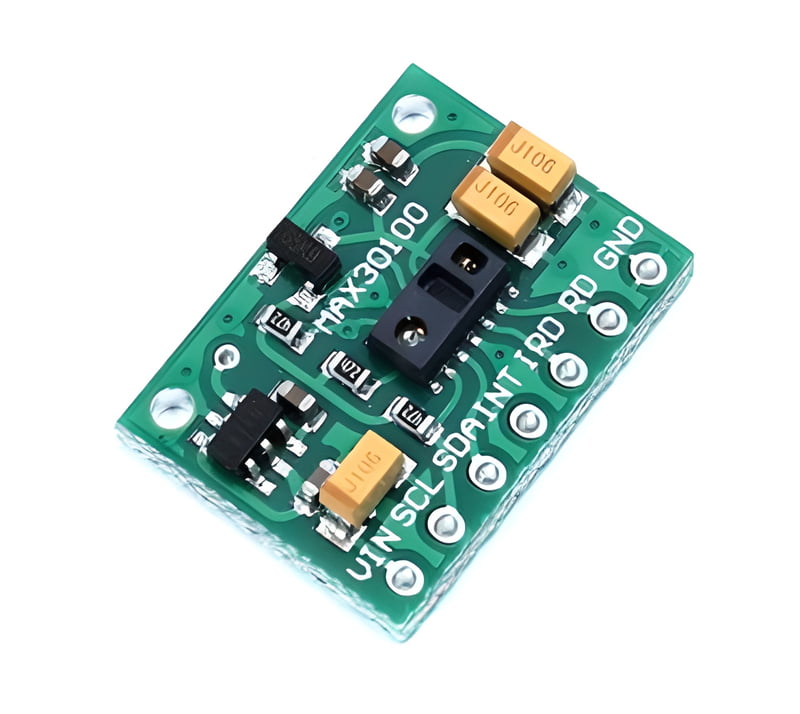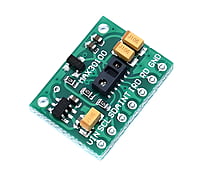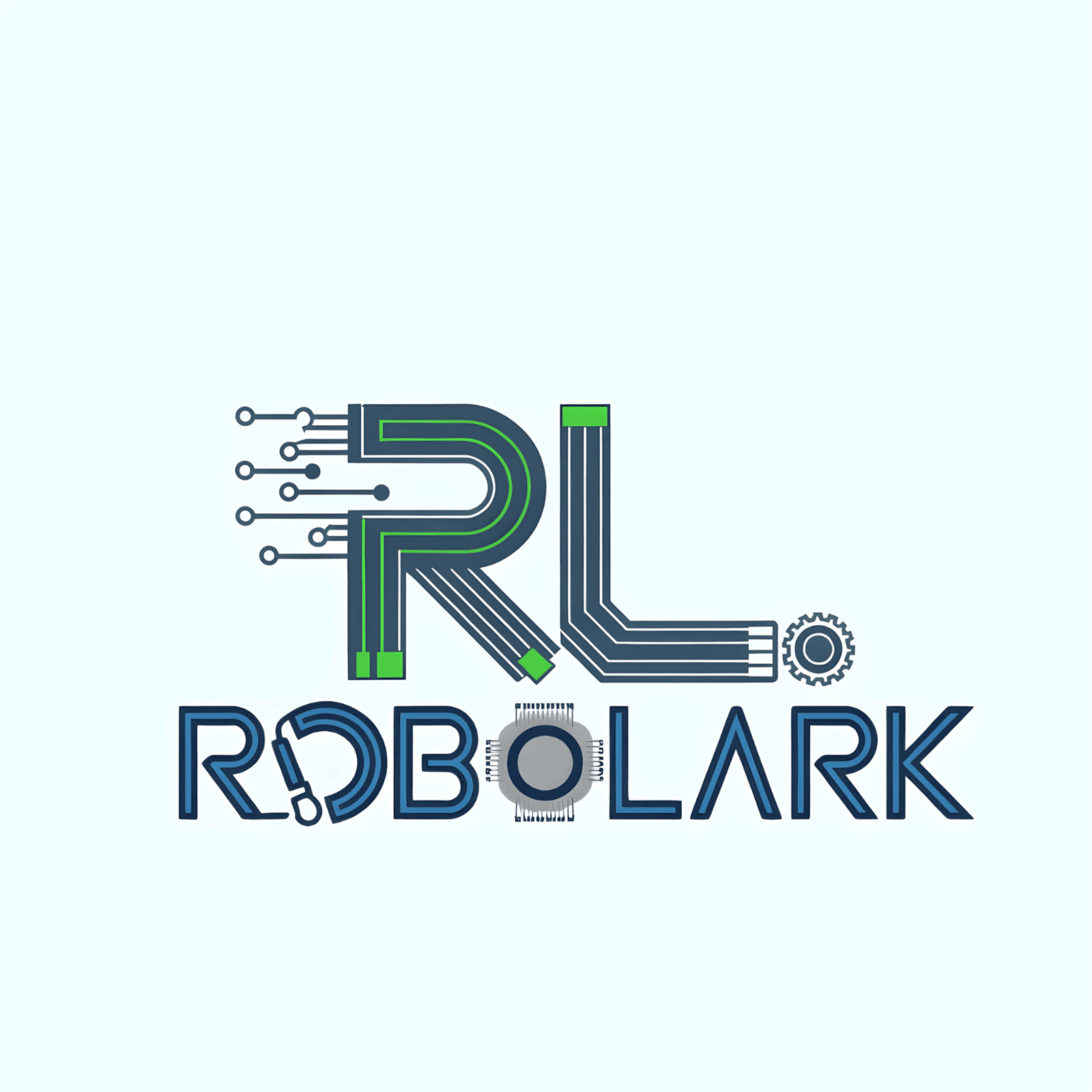





MAX 30100 Pulse Oximeter Heart Rate Sensor Module
The MAX30100 is an advanced Pulse Oximeter and Heart Rate Monitor IC. Equipped with optical sensors, it accurately measures blood oxygen levels and heartbeats, making it ideal for wearable health devices, fitness trackers, and medical applications where real-time pulse monitoring is crucial
Non-returnable
SKU - R0459 G-5
Rs.125.00
In stock:
10
Choose Quantity:
Share:
Product Details
Measurement Functions:
Heart Rate Monitoring: The MAX30100 can measure the user's heart rate, typically in beats per minute (BPM).
Blood Oxygen Saturation (SpO2) Monitoring: It can also measure the oxygen saturation level in the blood, which is a critical parameter for assessing respiratory health.
Infrared and Red LEDs: The module includes both red and infrared (IR) LEDs. These LEDs are used to shine light through the user's skin, and the reflected light is analyzed to determine heart rate and SpO2.
Integrated Photodetector: The module incorporates a photodetector that captures the reflected light from the LEDs. Changes in the detected light intensity are used to calculate heart rate and SpO2.
I2C Communication: The MAX30100 communicates with microcontrollers and other devices using the I2C (Inter-Integrated Circuit) communication protocol. This simplifies interfacing with various microcontroller platforms.
Low Power Consumption: The module is designed to operate with low power consumption, making it suitable for battery-powered devices and wearables.
Compact Form Factor: The MAX30100 module is small and compact, making it easy to integrate into wearable devices or medical monitoring equipment.
Applications: The MAX30100 module is commonly used in applications such as fitness trackers, smartwatches, sleep monitoring devices, and medical equipment for non-invasive patient monitoring.
Library Support: Various libraries and code examples are available for microcontrollers, allowing developers to interface with and process data from the MAX30100 sensor module.
Accuracy: The accuracy of heart rate and SpO2 measurements may vary depending on factors such as device calibration, skin tone, and sensor placement.


